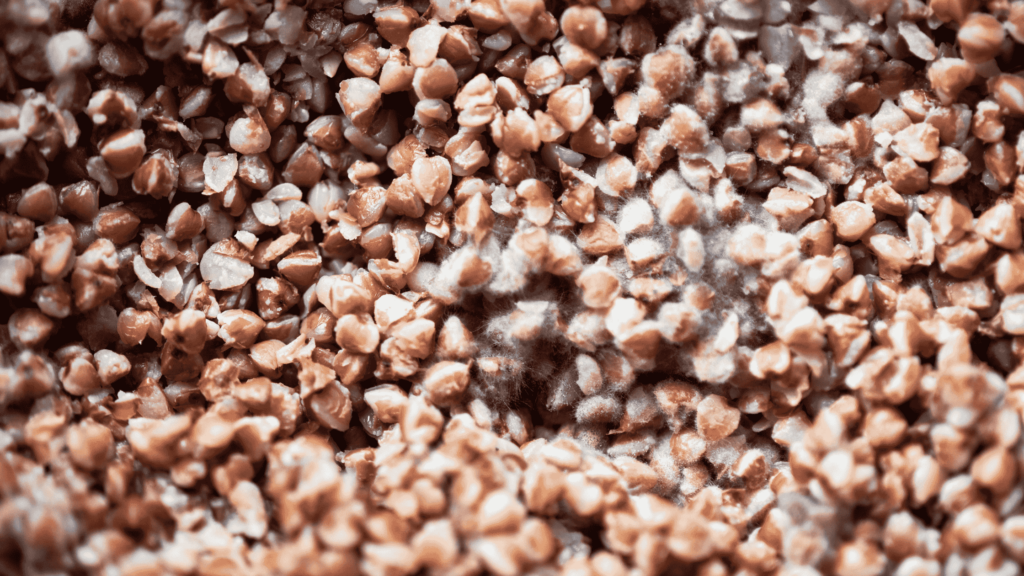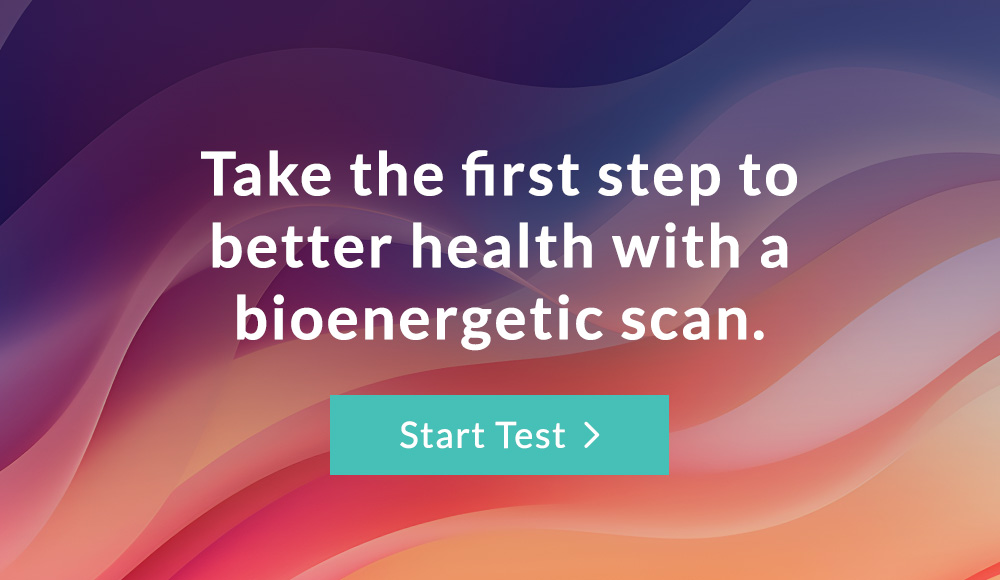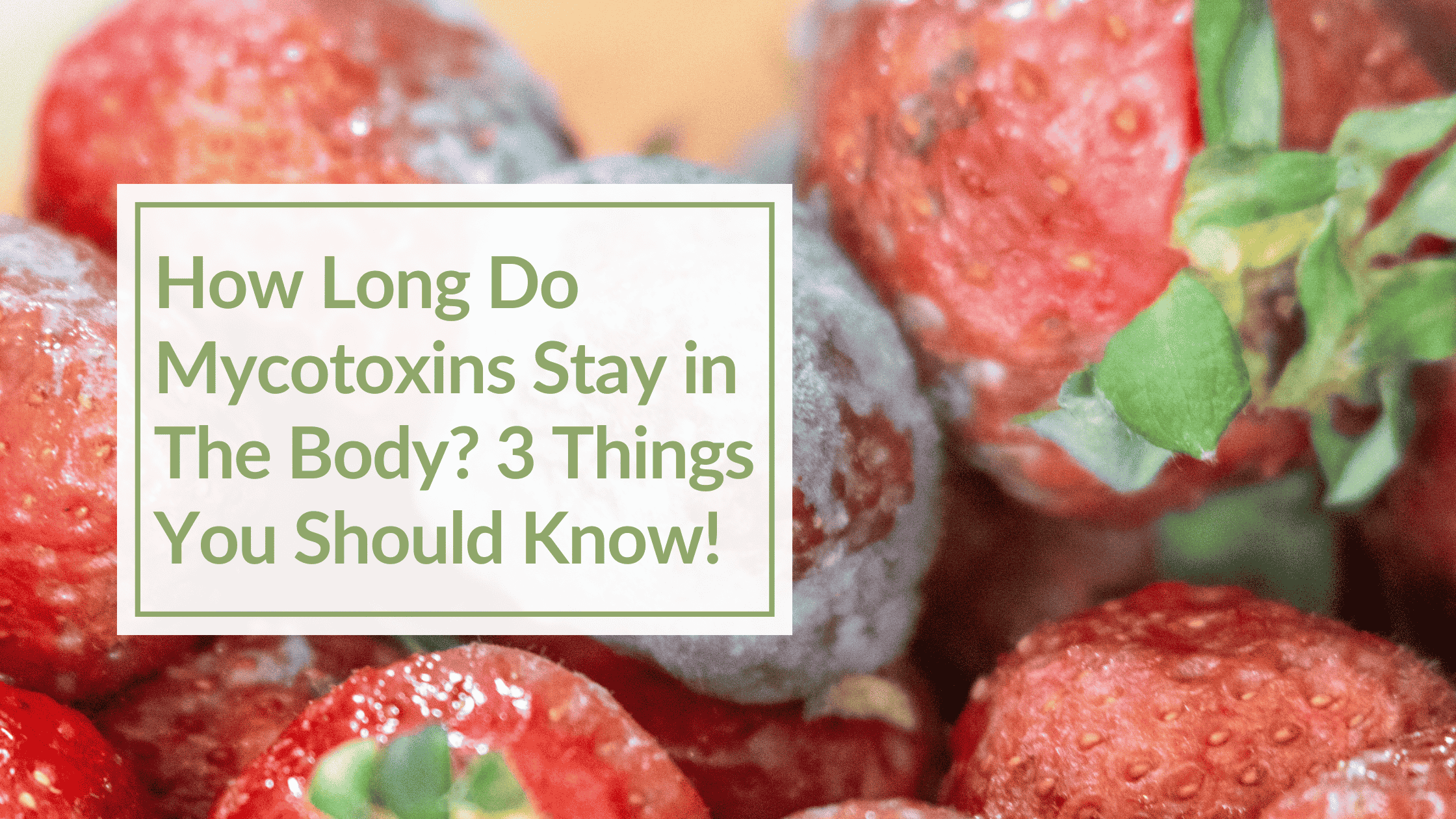
If You’ve Encountered Mold, You’ve Probably Encountered Mycotoxins.
Mycotoxins, toxic compounds produced by certain molds, are more common than many people realize. They can sneak into your body through contaminated food, water, or even the air in damp, water-damaged homes, buildings, or classrooms.
These toxins have been linked to a variety of health issues, ranging from respiratory problems to chronic fatigue and neurological effects. But how long do mycotoxins stay in the body, and can you fully detoxify them?
Read on to find out three important facts about how mycotoxins interact with your body’s detox pathways, how long they really stay in your system, and how you can support your body in clearing them out.
What Exactly Are Mycotoxins?
You already know mycotoxins are toxic compounds from certain molds, but what makes them toxic? It’s not just about being exposed—mycotoxins are sneaky.
They’re tiny enough to enter your body unnoticed, but their effects can linger. Do they stay forever?! These toxins are resilient, can bind to your tissues, and affect your health in ways you may not expect, especially if they come from mycotoxins in food or moldy environments.
Before diving into detox strategies, it’s important to understand some of the mycotoxins released by mold and how they affect different parts of the body.
Mycotoxins and the Molds That Produce Them
Aflatoxins
- Produced by: Aspergillus flavus and Aspergillus parasiticus
- Found in: Stored grains, dried fruits, nuts, spices, and contaminated dairy products from livestock fed with moldy grains.
- Body Systems Affected: Aflatoxins primarily target your Liver and Immune System. Chronic exposure suppresses immune function, weakening your body’s defense against infections by hindering white blood cell function.
Ochratoxin A
- Produced by: Aspergillus and Penicillium species
- Found in: Foods like cereal, coffee, wine, beer, and dried fruits, as well as damp, moldy environments.
- Body Systems Affected: Ochratoxin A stresses the kidneys and Urogenital System, disrupts Immune System function, and has potential neurotoxic effects on the Nervous System, such as damaging peripheral nerves, which can cause tingling or numbness in your hands and feet.
Trichothecenes
- Produced by: Known for being produced by the infamous black mold – Stachybotrys, as well as Fusarium and Trichothecium
- Found in: Water-damaged buildings and crops like grains.
- Body Systems Affected: Exposure can cause issues in the Respiratory System, neurological problems, and Digestive System distress, including nausea and diarrhea.
Zearalenone
- Produced by: Fusarium
- Found in: Contaminated grains.
- Body Systems Affected: Zearalenone is known to disrupt the Endocrine System, leading to potential fertility issues and hormonal imbalances in both men and women.
Deoxynivalenol
- Produced by: Fusarium graminearum
- Found in: cereal products, buckwheat, sorghum, and popcorn.
- Body Systems Affected: Central Nervous System and Digestive System.
Each of these mycotoxins has a unique way of affecting the body. Mycotoxins in food are particularly insidious, as they can infiltrate your system through your diet and may cause long-term health problems.
Disclaimer: CBH does not diagnose medical conditions with bioenergetic testing. We CAN help identify issues that may be stressing our energetic field.
Want to detox from mycotoxins – here are 3 facts you should know!
Fact #1: Mycotoxins Can Linger for a Long Time
When you ask, “How long do mycotoxins stay in the body?“ the answer isn’t as simple as just avoiding exposure. Mycotoxins in food and water-damaged environments can linger in the body for an extended period of time because they are fat-soluble.
Toxins like aflatoxin and ochratoxin A accumulate in your body’s fat tissues, which makes them difficult to metabolize and excrete.
Even after the immediate exposure ends—whether it’s mycotoxins in food or from mold in your environment—the toxins may still be present in your system, making detoxification a slow process.
Research shows just how stubborn some mycotoxins can be:
- Aflatoxins can persist in tissues for several weeks, with a half-life that prolongs detoxification.
- Ochratoxin A has a half-life of up to 35 days, meaning even a single exposure could have lingering effects for over a month.

Fact #2: Genetic Susceptibility Plays a Key Role in Mycotoxin Detoxification
Not everyone processes mycotoxins the same way. For some people, it’s easy to detoxify, but for others—especially those with certain genetic predispositions—it’s much harder. This could be related to the HLA-DR gene or the human leukocyte antigen gene. This gene impacts detoxification and the immune system.
The Role of Genetics
People with genetic mutations in detox pathways, like MTHFR variants, are more sensitive to toxins and have slower detoxification processes.
If you have Chronic Inflammatory Response Syndrome (CIRS), mycotoxin exposure can cause long-term issues.
For more on how mold exposure triggers CIRS, check out our Mold Toxicity and Mold Illness blog post:
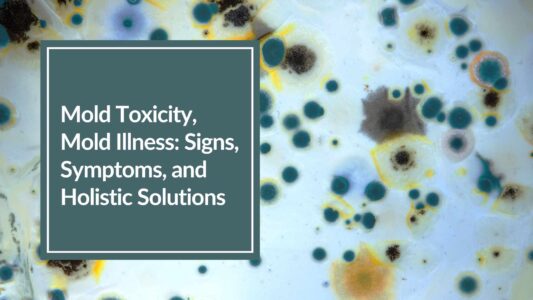
What Does This Mean for Mycotoxin Exposure in Food?
For those with genetic susceptibility, exposure to mycotoxins in food can be an ongoing issue. Even small amounts of mycotoxins from foods like grains, nuts, and coffee can accumulate over time, triggering or worsening symptoms. This makes regular detoxification strategies critical, as their bodies can’t easily flush out these toxins.
Even though you can’t completely avoid mycotoxins in food, minimizing exposure can make a big difference in how your body handles these toxins.
Supporting the Liver is important as detoxification phases must work harmoniously. All toxins that travel through the body move through the bloodstream and pass through the Liver.

Fact #3: Detoxing Mycotoxins Requires Specific Nutritional and Lifestyle Support
When eliminating mycotoxins from your body, your skin, Liver, kidneys, and gut need to be factored in! These detox pathways are responsible for processing and excreting the toxins, but they need extra support, especially after prolonged exposure to mycotoxins in food and water-damaged environments.
Support Your Detox Pathways
Liver: Nutrients like glutathione, NAC, and milk thistle help the liver process mycotoxins.
Gut: Specific binders such as activated charcoal, pectin, cholestyramine, Saccharomyces boulardii, bentonite clay, and even chlorella can trap and remove toxins, preventing reabsorption.
Kidneys: Staying hydrated and supporting kidney function with herbs like dandelion or stinging nettle helps flush toxins through urine.
Different Binders May Work Best for Different Mycotoxins
- Aflatoxins: Activated charcoal, bentonite clay, and chlorella.
- Ochratoxin A: Activated charcoal, bentonite clay.
- Trichothecenes: Zeolite, bentonite clay, and activated charcoal.
- Zearalenone: Cholestyramine (prescription) or zeolite.
Our blog “What are the best toxin binders?” will help you learn more about the selection of binders.
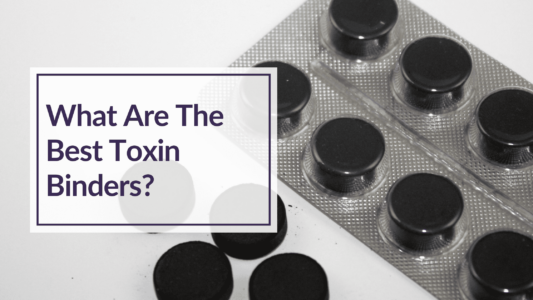
Try to Avoid Moldy Foods and Drinks
It may not be possible to avoid food that has mycotoxins completely. Mold is a natural part of the environment. Yes, you can avoid buying moldy foods – but we can’t see mycotoxins, which can be a constant source of re-exposure.
- Choose High-Quality Coffee: Look for organic, mold-tested brands. They often undergo additional testing to ensure low levels of mycotoxins.
- Select Chocolate Carefully: Opt for organic, fair-trade chocolate that prioritizes mold control.
- Store Grains Properly: Store them in a cool, dry place to avoid mold growth. Avoid old or poorly stored products, as they are more likely to be contaminated.
Lifestyle Tips for Reducing Mycotoxin Exposure
Beyond nutrition, lifestyle choices play a significant role in minimizing exposure and promoting detoxification:
- Keep Your Home Dry and Clean: Mold thrives in damp environments. Use dehumidifiers and air purifiers, and ensure proper ventilation to prevent mold growth in your living spaces.
- Detoxify Through Sweat: Infrared sauna therapy promotes the elimination of mycotoxins through sweat. Regular sweating sessions help your body release stored toxins. Move your body!
- Use Plants: Besides using HEPA air purifiers, you can introduce houseplants like peace lilies or spider plants, which naturally filter toxins from the air.
So, How Long Do Mycotoxins Stay in Your Body?
The short answer: it depends! Since mold is everywhere, you may never be completely free of mycotoxins. But by supporting your detox pathways with the right nutrition and smart lifestyle choices, you can help your body eliminate stored toxins and reduce your overall toxic load.
To find out which toxins may be stressing your system, try our comprehensive bioenergetic test—the Full Scan! Plus, you may find hormonal and nutritional imbalances and environmental and food sensitivities that may come into play.
DISCLAIMER: Balanced Health, LLC/CBH Energetics and any parent, subsidiary, affiliated, or related entities and companies do not provide medical advice or services. This post and the bioenergetic products and services offered by Balanced Health, LLC/CBH Energetics including, but not limited to, bioenergetic tests, bioenergetic scans, bioenergetic reports and related products and services (collectively the “Bioenergetic Products and Services”) are designed for educational and informational purposes only and are not intended to diagnose, treat, cure, or prevent any disease, condition, complaint, illness or medical condition and are not a substitute for professional services or medical advice. Testing is not used for the purpose of obtaining information for the diagnosis, prevention, or treatment of disease or, the assessment of a health condition or for identification purposes.
